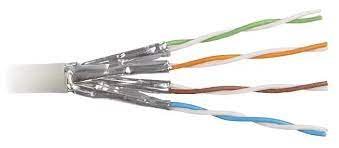burgerking
New Member
I am sure this is not how to use Twisted Pair cables.I paralleled the cores up. I.e 4 wires for each of the CT conductors.
You should use only 1 pair, and use Pure Copper (not Copper Coated Aluminum) as it needs to conduct as much as 1A.
Better result is to use Shielded Twisted Pair: each pair is shielded

Best result is to use Double Shielded Twisted Pair: each pair is shielded, and then the whole pack is shielded again.


